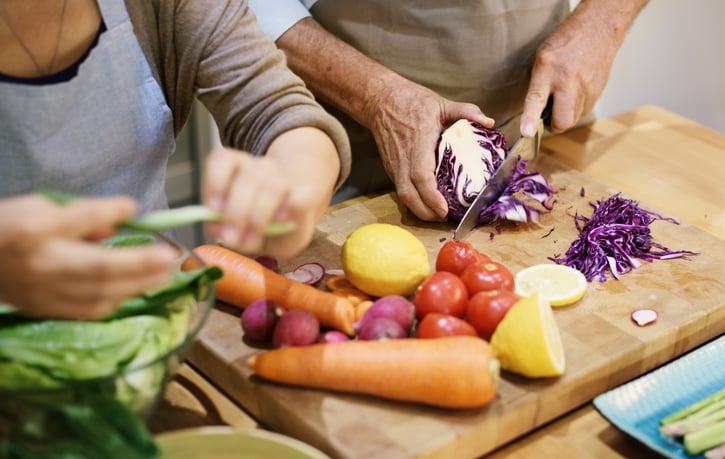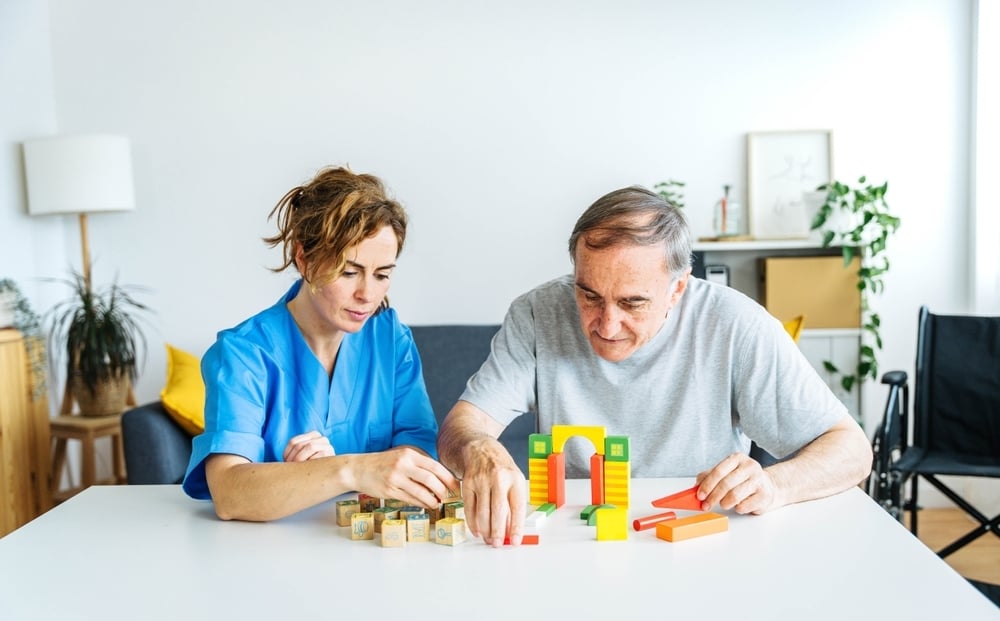How cooking therapy can stimulate the senses, strengthen connections and provide a sense of accomplishment for people with dementia
When caring for people with dementia in a residential setting, two of the biggest goals for care staff in achieving the best possible quality of life are to provide a healthy environment, for example where possible providing a nutritious, balanced diet in order to keep the body healthy, and to provide a range of engaging activities that stimulate the mind and give residents a sense of purpose and fulfilment. That’s why cooking therapy for dementia is such a useful activity, as it gives care staff the opportunity to both provide a nutritious meal as well as provide an outlet for engagement.
It’s natural and quite common that as people age, they tend to eat less than they used to. Moreover, older adults tend to avoid wanting to cook large meals because they don’t want to have lots of leftovers, and even when food that has been prepared for them, they can often shy away from large portions for the same reason. This can potentially lead to nutritional issues and the health issues that often come as a result, which makes a cooking activity all the more beneficial.
For even more inspiration, read here for our top 10 activities for people with dementia
The importance of sense stimulation
A significant aspect of providing fulfilling and engaging activities for people with dementia is stimulating the senses, which include sight, sound, smell, taste and touch. This is because people with dementia will experience a diminishing of the senses as the condition progresses, so finding ways to reinvigorate them goes a long way to providing an engaging and worthwhile activity for someone with dementia.
It’s often said that our sense of smell is most closely linked to our memories; it’s common for a certain type of smell to suddenly bring back vivid memories, for example of a meal that was often cooked on a special occasion like a roast dinner at Christmas, and this can help with people who have dementia too. Whether it’s the smell of spices or herbs or the unmistakable smell of bread baking in the oven, this might help to illicit memories in the resident and help them maintain a connection to their life story and their sense of self.
Not only for the sense of smell, but cooking is one of the few activities that can stimulate all of the senses almost simultaneously. With actions like kneading bread, handling ingredients, or the sensation and smell of chopping something, it provides stimulation for the senses of touch, of sight, and others. As well as this, the actions of chopping, stirring or organising ingredients can help to sharpen motor skills and dexterity, and the sensation of hearing a pan frying, water running, or a pot being stirred can go a long way to helping a resident stay connected to their surroundings through very identifiable and relatable sounds.

Cooking as a communal activity
On top of this, cooking can also be a very communal experience. If a person with dementia can cook a meal with the care staff, this activity can increase the possibility of forming a closer connection, as well as increase their mood and lower the chances of feeling isolated by taking part in such a collaborative process. It can be very flexible and can be entirely dictated by the extent to which a person with dementia can contribute – from only being able to gather ingredients all the way to taking the lead and cooking semi-independently.
Whatever level of engagement in the process there is, there are benefits to taking part; even the simple process of helping to gather ingredients can help someone feel a sense of agency in that they are contributing to the cooking of a meal, not to mention the chance to stimulate the senses by handling and smelling the ingredients. And if they can, for the most part, prepare the meal themselves, this can potentially lead to a significant feeling of accomplishment, boost feelings of independence, and help to concentrate their efforts and energy so as to reduce feelings of agitation and ward of lethargy.
Things to consider when cooking with people with dementia
Keeping it a person-centred activity
Using cooking as a means of helping with engagement and fostering a happy, positive and productive atmosphere means always keeping the resident at the centre of the process. So, it’s always handy to refer to care plans and resident files to understand if there are any particular dishes they really enjoy, any that they enjoy making, or anything they don’t like before suggesting a dish to cook. This can help to reinforce the connection to their life story, as someone with dementia may not be able to recall meals that they have always enjoyed, or might need prompting to jog their memory, depending on the severity of their symptoms.
This process is very straightforward with the help of a digital care planning system, like Person Centred Software’s mCare, which brings all the information you need for resident care and quality of life into one place, in more detail than paper records of plans ever could.
Resident safety
It goes without saying that the safety of the residents is the highest priority and should always be paramount in any activity undertaken, and this is all the truer when it comes to cooking.
Some tips to help keep the activity safe and fun are making sure the kitchen is well lit, remove anything that could pose a falling risk, ensure the smoke detectors are working and keep an eye on the water temperature to avoid potential scalding incidents.
Providing the best person-centred care through wellbeing and activities
Engagement and enrichment are just some of the central concepts of providing person-centred care for people with dementia. The best way to do that is to provide a full range of fun and rewarding activities to keep them stimulated and connected to the world around them. You can do this with the Oomph! OnDemand Wellbeing and Activities Platform.






.jpg)

.webp?width=80&height=80&name=HTD%20Awards%202023%20Badge%20(4).webp)














